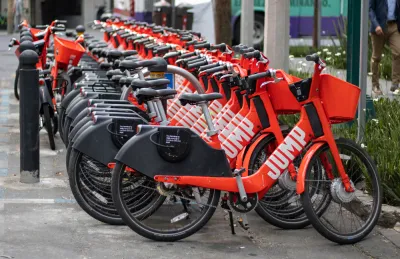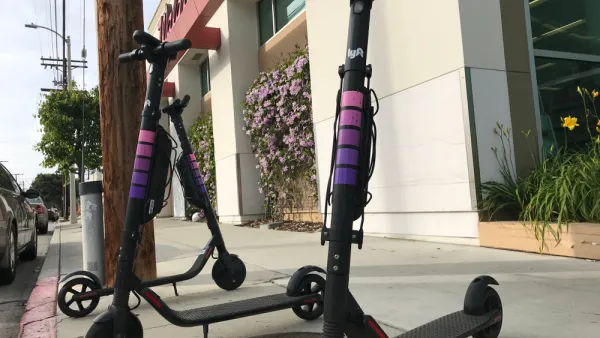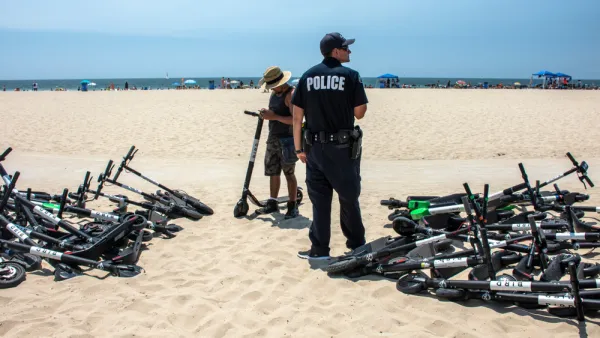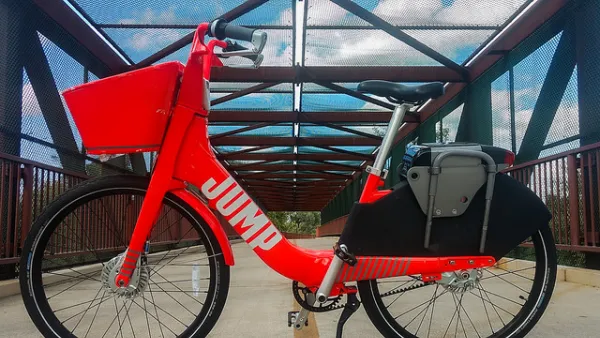An exposé of the dramatic rise and fall of JUMP bikes under the ownership of Uber, in partnership with cities all over the United States.

Aaron Gordon tells a history of bikeshare that starts with a high-profile acquisition and ends up in the literal garbage.
The article starts at the end, when images of JUMP bikes being destroyed by the thousands went viral on social media at the end of May, before interviewing former JUMP employees for lessons about where Uber's ownership of the bikeshare company went wrong. "Few, if any, of JUMP’s former employees were shocked by the videos [of the bikes being destroyed]. To some, it even felt a fitting, if upsetting, coda to a troubled two years under Uber’s stewardship."
The main culprit of JUMP's decline and fall, was a shift in company culture from efficient and idealistic to scale-obsessed and wasteful. Not all of the blame is laid at the feet of Uber, however. "It's about the role cities play in determining their futures, how much of that role has been usurped by a handful of people with a lot of money, and the perils of trying to be the good guy," writes Gordon.
The long-read exposé ranges from the history of the original dockless bikeshare companies, like SoBi, Motivate, Ofo, to the sudden explosion of venture capital funding and the ups and downs of popularity and missed revenue expectations that followed in the second half of the 2010s—all before Uber took over JUMP bikes in 2018.
"Accounts differ on precisely how long it took Uber to undermine everything JUMP had previously been about," writes Gordon. "Some former employees said it happened virtually immediately. Others described a more gradual process that took a few weeks. But they unanimously agreed it didn’t take long at all for JUMP to stop being JUMP."
The big question looming over the entire discussion, and the implications of the JUMP story for future private efforts to deliver alternatives to automobile travel in urban areas, is whether the bikeshare model can be profitable at all. In May, Uber sold JUMP bikes to Lime, which was reported to have lost $300 million in 2019.
FULL STORY: How Uber Turned a Promising Bikeshare Company Into Literal Garbage

National Parks Layoffs Will Cause Communities to Lose Billions
Thousands of essential park workers were laid off this week, just before the busy spring break season.

Retro-silient?: America’s First “Eco-burb,” The Woodlands Turns 50
A master-planned community north of Houston offers lessons on green infrastructure and resilient design, but falls short of its founder’s lofty affordability and walkability goals.

Delivering for America Plan Will Downgrade Mail Service in at Least 49.5 Percent of Zip Codes
Republican and Democrat lawmakers criticize the plan for its disproportionate negative impact on rural communities.

Test News Post 1
This is a summary

Test News Headline 46
Test for the image on the front page.

Balancing Bombs and Butterflies: How the National Guard Protects a Rare Species
The National Guard at Fort Indiantown Gap uses GIS technology and land management strategies to balance military training with conservation efforts, ensuring the survival of the rare eastern regal fritillary butterfly.
Urban Design for Planners 1: Software Tools
This six-course series explores essential urban design concepts using open source software and equips planners with the tools they need to participate fully in the urban design process.
Planning for Universal Design
Learn the tools for implementing Universal Design in planning regulations.
EMC Planning Group, Inc.
Planetizen
Planetizen
Mpact (formerly Rail~Volution)
Great Falls Development Authority, Inc.
HUDs Office of Policy Development and Research
NYU Wagner Graduate School of Public Service





























